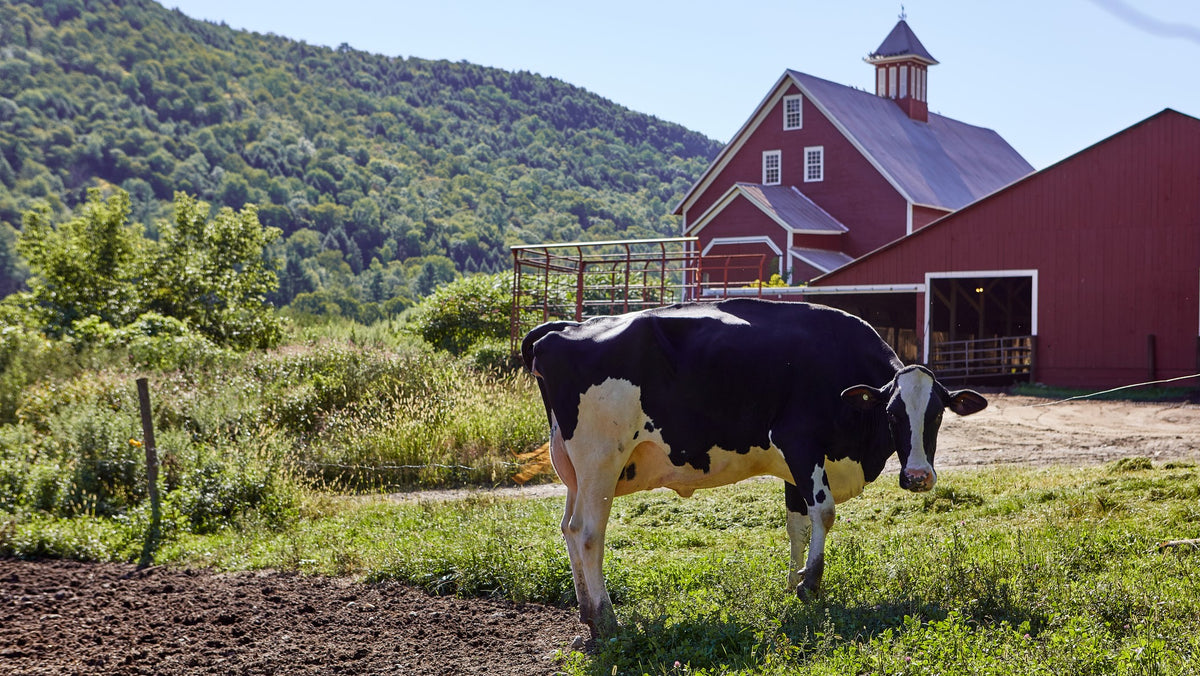
Farmer Friday: The Senses of a Cow
Every dairy farmer has their favorite part of the job – whether it’s working closely with family, getting to be outside or working with the animals. This week, summer intern and #CabotFarmer from Five Mile Farm, Allison Akins shares some of her observations in growing up and learning about cows. Thanks Allison!Just like people, cows recognize voices and sounds, smells and touch. Cows are very curious animals, and they are constantly monitoring their surroundings. As a farmer or visitor to a farm, it is always interesting to watch as they utilize their various senses to try to be first in line for food or milking or to avoid the farm dog. By applying their five senses to their everyday life, cows are both similar and very different from humans.

A tractor coming through the barn signifies feeding time, and the scraping of stalls to clean the barn means it is time to walk to the milking parlor. Many cows will come when their name is called. They even differentiate between the voices of the person calling their name and sometimes they ignore you – just like a stubborn teenager trying to avoid a job they don’t like. Don’t be fooled – they hear just fine!

Like many animals (and people) cows follow their nose. Their amazing sense of smell is perhaps their best defense mechanism. They can sense a smell up to six miles away and they know their meals are being served, well before they hear the tractor enter the barn!

A cow has around 25,000 taste buds – 2.5 times more than a human has! Part of the reason they have so many is because they are herbivores. Herbivores need to be able to differentiate between the poisonous plants and the non-poisonous plants. Cows are also ruminants, which means that they regurgitate their food and re-chew it. Farmers often refer to this as “a cow chewing her cud”. On average, a cow will move her jaw 50 times a minute – that’s around 72,000 times a day!

Cows have a very sensitive sense of touch. They can feel a fly landing on them. Fortunately, they can flick that fly off with a simple twitch of that localized area, or use their tail in a sweeping motion to swat it. Many barns these days also have brushes, which the cows LOVE! Touch is also how cows and humans most often communicate with each other. It is important for people who are milking a cow to touch her first, so she is aware someone is near her.

The biggest myth told about cows is that they are attracted to the color red. In fact cows are red-green color blind – therefore they can’t even see the color red. In a bull fight, the moving of the cape is what attracts the bull, not the color of the cape. Surprisingly, cows have nearly 360 degree vision, with the only blind spot directly behind them. This is the reason why cows shift their head back and forth when they walk – always checking to see what is to the rear.

Cows are amazing creatures and getting to learn all their intricate attributes is just one of the joys of dairy farming. No two cows are the same, but they are all incredible in their own way.














